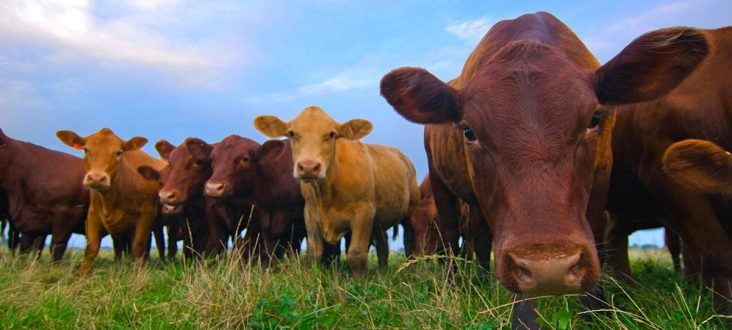Cattle, beef prices move past spring peaks
by May 14, 2019 7:45 am 448 views

Fed cattle prices continued to rally through April and surpassed seasonal peaks in March, according to Derrell Peel, agriculture extension specialist with Oklahoma State University. He said April looks to have been the peak for fed cattle prices at $128 per hundredweight. In the past week, prices have dropped to the $120 range, which are the lowest fed cattle prices since December.
He said the early round of summer grilling wholesale purchases for Memorial Day are over and the middle meat prices are steady-to-weak with cuts like ribeyes trading lower.
“This may reflect widespread wet, cold weather across much of the country that is delaying summer beef demand. Boxed beef cutout values will likely strengthen again with July 4 buying commencing in middle to late May. Warmer summer weather should also boost beef demand seasonally in the coming weeks,” Peel noted.
He explained prices of chuck and round cuts were also down, which is typical of the pre-summer months.
Beef exports were down 5.7% year-over-year through March with reduced exports to Japan, Canada and Hong Kong, while South Korea and Mexico continue to be growing markets for U.S. beef.
“For the first quarter, total beef exports were down 4.7% from a year ago. Growth in beef exports the past three years has been especially strong for products from the chuck. Current forecasts are for total beef exports in 2019 to be quite close to 2018 levels, barring any major changes in global trade policies,” Peel noted.
The U.S also imported 6.3% more beef in March and 6.3% more through the first quarter compared to the year-ago period. He said beef imports are up for major import sources including Canada, Australia and Mexico but are down sharply from New Zealand. Total beef imports in 2019 are projected to hold close to year-ago levels.
USDA reports beef production is up less than 1% this year with cattle slaughter up 1.3% year-to-date. Peel said the higher slaughter number is off-set by lower carcass weights for steers and heifers.
For producers wanting to grow their herds, calf and stocker prices have dropped significantly in May after peaking last month, Peel said.
“Calf prices generally decline from first quarter peaks to seasonal lows in the fall. Heavy feeder cattle prices, which seasonally grind higher from now until late summer, have also dropped recently. I suspect this is largely due to delayed feedlot marketings resulting from earlier winter weather combined with continuing wet, sloppy feedlot conditions,” he said.
“Heavy feeder prices will likely get back on seasonal track as feedlots catch up from earlier delays and feedlot pen conditions improve in the next few weeks,” Peel added.
